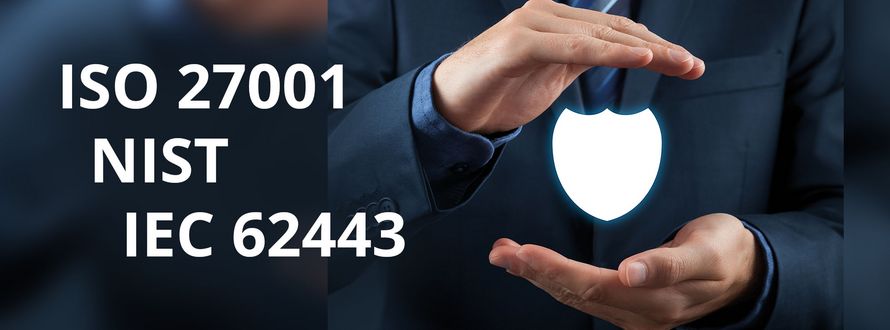In today's interconnected world, where technology permeates every aspect of our lives, the importance of security and cybersecurity cannot be overstated. As we rely more on real-time applications to power critical systems and services, ensuring their protection becomes paramount. Let us dive into the significance of security and cybersecurity in safeguarding real-time applications, exploring the potential risks, the challenges faced, and the measures that can be taken to fortify these vital systems.
1. The growing Threat Landscape
The digital landscape is fraught with an ever-increasing array of threats, ranging from malicious hackers and cybercriminals to state-sponsored attacks and industrial espionage. Real-time applications, which underpin crucial sectors such as healthcare, transportation, energy, and finance, are particularly vulnerable to these threats. A breach or compromise in a real-time system can have dire consequences, including financial losses, damage to reputation, and even threats to human safety.
2. Risks to real-time Applications
Real-time applications face a multitude of risks that make them attractive targets for attackers. These risks include unauthorized access, data breaches, malware infections, denial-of-service attacks, and social engineering tactics. For instance, in the healthcare sector, a compromised real-time application can result in patient data theft, tampering with medical records, or disruption of critical medical services. The potential impact of such breaches underscores the urgent need for robust security measures.
3. Unique Challenges in securing Real-Time Applications
Securing real-time applications presents distinct challenges compared to traditional software systems. Real-time applications operate under strict timing constraints and require predictable and deterministic behavior. Security measures must be carefully implemented to avoid adversely impacting the performance and real-time capabilities of these applications. Additionally, real-time systems often rely on a mix of legacy and modern technologies, further complicating the security landscape.
4. Defense-in-Depth Approach
To effectively protect real-time applications, a comprehensive defense-in-depth strategy is crucial. This approach involves implementing multiple layers of security measures at various levels, including network security, system hardening, access control, encryption, intrusion detection, and incident response. Each layer adds an additional barrier to deter and mitigate potential threats, ensuring a robust security posture.
5. Secure Development Practices
Embedding security into the development life cycle is vital to ensuring the resilience of real-time applications. Employing secure coding practices, such as input validation, buffer overflow prevention, and proper error handling, helps minimize vulnerabilities. Conducting regular security audits, penetration testing, and code reviews can help identify and address any weaknesses or vulnerabilities in the application.
6. Importance of secure Communication
Real-time applications often communicate with other systems and devices, making secure communication protocols indispensable. Implementing encryption, authentication, and secure protocols such as Transport Layer Security (TLS) or Secure Shell (SSH) ensures that sensitive data remains protected during transmission. Additionally, securely managing keys and certificates is vital to prevent unauthorized access and maintain the integrity of communication channels.
7. Continuous Monitoring and Threat Intelligence
To stay ahead of emerging threats, real-time applications require continuous monitoring and real-time threat intelligence. Implementing intrusion detection and prevention systems, security information and event management (SIEM) solutions, and leveraging threat intelligence feeds helps detect and respond to potential attacks promptly. Proactive monitoring allows for quick mitigation of security incidents, minimizing the impact on real-time applications.
8. Collaborative Efforts and Industry Standards
Security in real-time applications is a collective responsibility that requires collaboration among industry stakeholders. Organizations must actively participate in sharing threat intelligence, best practices, and vulnerabilities through industry forums and collaborations. Adhering to established security standards, such as ISO 27001, NIST Cybersecurity Framework, or IEC 62443, helps create a common framework for achieving robust security in real-time applications. These standards provide guidelines and best practices for organizations to develop, implement, and maintain effective security controls.
ISO 27001, an internationally recognized standard for information security management systems, offers a comprehensive framework for establishing, implementing, maintaining, and continually improving an organization's information security management system. Adhering to ISO 27001 helps organizations identify and mitigate security risks, ensuring the confidentiality, integrity, and availability of information assets.
The NIST Cybersecurity Framework, developed by the National Institute of Standards and Technology (NIST), provides a risk-based approach to managing cybersecurity risks. It offers a set of guidelines, standards, and best practices that enable organizations to assess their current cybersecurity posture, develop strategies to improve resilience, and effectively respond to and recover from security incidents. The framework focuses on five core functions: Identify, Protect, Detect, Respond, and Recover.
IEC 62443, also known as the International Electrotechnical Commission (IEC) standard for industrial automation and control systems (IACS) security, specifically addresses the security challenges faced by real-time systems in critical infrastructure sectors such as energy, transportation, and manufacturing. IEC 62443 provides a systematic approach to secure the entire life cycle of IACS, including the development, implementation, and maintenance of secure systems. The standard defines security levels, risk assessment methodologies, and security requirements for different components and processes within IACS.
Conclusion
Adhering to these security standards demonstrates an organization's commitment to maintaining a high level of security and resilience in their real-time applications. Compliance with these frameworks helps establish a common language and understanding of security requirements, facilitates interoperability, and fosters trust among stakeholders.
The significance of security and cybersecurity in protecting real-time applications cannot be underestimated. As these applications play a vital role in critical sectors, ensuring their integrity, confidentiality, and availability is essential. Implementing a defense-in-depth strategy, adhering to secure development practices, employing robust communication protocols, continuous monitoring, and complying with industry security standards are key pillars in building a resilient security framework for real-time applications. By prioritizing security, organizations can mitigate risks, safeguard sensitive data, and uphold the trust and confidence of their users and stakeholders in an increasingly interconnected world.
More information at www.sysgo.com/security
More information at www.sysgo.com/iso-9001-iso/iec-27001

